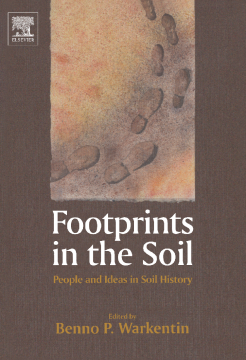
Additional Information
Book Details
Abstract
The history of science discipline is contributing valuable knowledge of the culture of soil understanding, of the conditions in society that fostered the ideas, and of why they developed in certain ways. This book is about the progressive “footprints made by scientists in the soil. It contains chapters chosen from important topics in the development of soil science, and tells the story of the people and the exciting ideas that contributed to our present understanding of soils. Initiated by discussions within the Soil Science Society of America and the International Union of Soil Sciences, this book uniquely illustrates the significance of soils to our society.
It is planned for soils students, for various scientific disciplines, and for members of the public who show an increasing interest in soil. This book allows us to answer the questions: “How do we know what we know about soils? and “How did one step or idea lead to the next one?
The chapters are written by an international group of authors, each with special interests, bound together by the central theme of soils and how we came to our present understanding of soils. Each concentrate on soil knowledge in the western world and draw primarily on written accounts available in English and European languages. Academics, graduate students, researchers and practitioners will gain new insights from these studies of how ideas in soil science and understanding of uses of soils developed.
* Discusses tracing soils knowledge accumulated from Roman times, first by soil users and after 1800s by scientists
* Offers ideas about how soils knowledge was influenced by the social context and by human needs
* Combines the history of ideas with scientific knowledge of soils
* Written by chapter authors who combine subject matter expertise with knowledge of practical soil uses, and provide numerous references for further study of the relevant literature
"In addition to discussing ways of studying soil through history, it considers the linkages between soils and people, communities, and cultures...This volume can be read and should be read by anybody with an interest in soil."
-Norm Catto, Department of Geography, Memorial University of Newfoundland, St. John's, Nl, Canada, QUARTERNARY INTERNATIONAL
